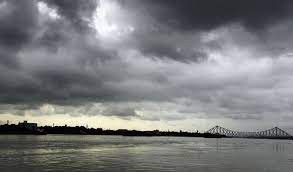Fishing Ban in Bay of Bengal: Marine Fish Disappear from Markets as Conservation Measures Take Effect

IIE DIGITAL DESK : The seasonal fishing ban along the Bay of Bengal coastline has come into effect, leading to a sharp drop in the availability of marine fish in local markets. Implemented by the governments of India and Bangladesh, the ban aims to protect the breeding cycle of fish species during the peak spawning season. While the move is environmentally necessary, it has had immediate repercussions for consumers, traders, and fishing communities who rely on the marine catch for their livelihoods and diets.
which typically begins in mid-May and lasts until the end of June, applies to mechanized trawlers and motorized boats operating in the Bay of Bengal. In India, coastal states like West Bengal, Odisha, Andhra Pradesh, and Tamil Nadu are enforcing the regulation strictly, as per guidelines from the Ministry of Fisheries. The 61-day prohibition is designed to allow fish populations, particularly species like hilsa, pomfret, and mackerel, to reproduce undisturbed in shallow waters, ensuring sustainability in the long run.
However, the impact of this ban is immediately visible in wholesale and retail fish markets across the region. In Kolkata’s largest fish hub, Sealdah Market, vendors report a significant decrease in supply. Fish that would normally sell at ₹200–₹300 per kg are now fetching ₹500–₹700 due to scarcity. In some areas, certain popular varieties such as hilsa are completely unavailable.
"The ban is necessary, but we are facing real difficulty," said Dipak Sardar, a fish trader in Diamond Harbour. “Our ice storages are running low, and there is no fresh catch coming in. Prices are soaring, and customers are walking away because they can’t afford it.”
For daily wage earners in the fishing industry, the ban period poses economic hardship. Thousands of fisherfolk who depend on deep-sea fishing for income are currently out of work. Though state governments have announced relief measures such as compensation and rice distribution, many complain that the aid is either insufficient or delayed.
The Department of Fisheries has also imposed similar restrictions along its 710-km coastline. Strict patrolling is being conducted by the coast guard to ensure compliance. “The main goal is to allow fish stocks to recover, particularly hilsa, which is both a national delicacy and an economic resource,” said an official from the Bangladesh Fisheries Research Institute.
Agree that the ban is essential for the long-term health of marine ecosystems. Overfishing and unchecked harvesting have led to a steady decline in fish populations. Marine biologists argue that without such seasonal interventions, species diversity in the Bay of Bengal would be severely compromised.
“Fish need safe, undisturbed zones during breeding periods,” said Dr. Sushmita Basu, a marine ecologist based in Bhubaneswar. “Short-term scarcity in markets is a small price to pay for future abundance.”
Are shifting to freshwater alternatives such as rohu, katla, and pangasius, which are farmed inland and remain unaffected by the ban. Frozen fish imports have also seen a slight uptick, but cannot fully compensate for the absence of fresh marine catch.
The fishing ban will be lifted at the end of June, after which normal operations are expected to resume. Until then, both consumers and industry players are being urged to cooperate with the regulations, which ultimately aim to ensure sustainable fishing practices and protect marine biodiversity in the Bay of Bengal.
As climate change and human activity continue to threaten ocean life, experts believe such seasonal bans may need to be extended or accompanied by year-round monitoring and stricter enforcement to truly safeguard the future of marine resources.
You might also like!















